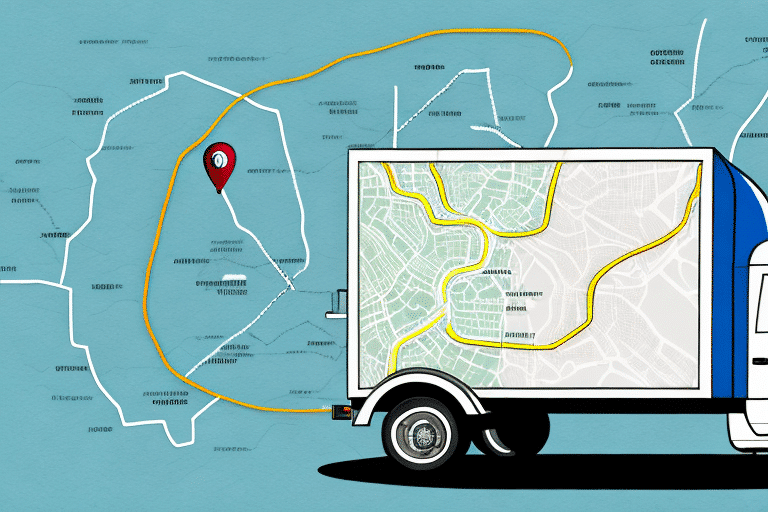Discover the Best E-Commerce Shipping Solutions for Your Business
In today’s dynamic marketplace, selecting the optimal shipping solution is paramount for e-commerce success. Efficient and cost-effective delivery not only enhances customer satisfaction but also fosters loyalty and drives repeat business. This article delves into the critical factors for choosing the best e-commerce shipping solutions, evaluates popular providers, and offers strategies to assess and optimize your shipping processes.
Why Choosing the Right Shipping Solution Matters
A reliable shipping partner is essential for any e-commerce business. Delays or mishandled deliveries can erode customer trust, leading to negative reviews and lost sales. The right shipping solution ensures your products reach customers promptly and securely, enhancing your brand’s reputation and encouraging repeat purchases.
Key Factors to Consider When Selecting a Shipping Solution
Shipping Costs
Shipping expenses can significantly impact your profit margins. It's crucial to select providers that offer competitive rates and discounts for bulk shipments. According to a Statista report, shipping costs account for approximately 10-15% of total e-commerce expenses. Look for solutions that provide transparent pricing and scalable options as your business grows.
Delivery Speed
Fast shipping options are increasingly important to consumers. Offering a variety of delivery speeds, such as same-day, next-day, and standard shipping, can enhance the customer experience. Data from Forrester indicates that faster delivery times can boost customer satisfaction and increase the likelihood of repeat purchases.
Integration Capabilities
Seamless integration with your e-commerce platform is vital to streamline order processing and reduce manual errors. Ensure the shipping solution supports integrations with platforms like Shopify, WooCommerce, or Magento. Effective integration facilitates automatic order tracking, efficient inventory management, and simplified returns handling.
Shipping Zones and Carrier Options
Evaluate the shipping zones covered and the range of carriers offered. A diverse selection of carriers can provide flexibility in delivery options and rates, enabling you to cater to both domestic and international markets effectively.
Top E-Commerce Shipping Solutions in 2024
USPS
The United States Postal Service (USPS) remains a cost-effective option for small businesses, especially for domestic shipping. With an extensive nationwide network, USPS offers reliable services for standard and expedited shipments. However, for large or international shipments, other carriers like FedEx or UPS might be more suitable.
FedEx
FedEx is renowned for its fast and dependable domestic and international shipping services. Offering options like overnight, 2-day, and ground shipping, FedEx caters to businesses that prioritize speed and reliability. According to FedEx Resources, businesses can leverage their extensive logistics network to ensure timely deliveries.
UPS
UPS provides a comprehensive range of global shipping solutions, competitive rates, and robust tracking capabilities. They are particularly praised for their security measures and exceptional customer service, making them a top choice for businesses with diverse shipping needs.
ShipStation
ShipStation is favored by small to medium-sized businesses for its multi-channel shipping capabilities. It integrates seamlessly with major e-commerce platforms, offers batch printing, and automates many aspects of the shipping process, enhancing efficiency.
Easyship
Easyship offers an all-in-one shipping solution with features like discounted rates, live courier rates, and comprehensive order tracking. Supporting over 250 shipping destinations, Easyship is ideal for businesses looking to expand their global reach while maintaining cost control.
Pros and Cons of Popular Shipping Providers
USPS
- Pros: Affordable rates, nationwide coverage, secure deliveries.
- Cons: Slower delivery times for some services, higher costs for international shipping, limited options for large packages.
FedEx
- Pros: Fast and reliable global shipping, extensive range of services, strong tracking capabilities.
- Cons: Higher costs for expedited services, additional fees for special handling.
UPS
- Pros: Comprehensive global coverage, various delivery options, excellent customer service.
- Cons: Can be more expensive than competitors, especially for small businesses.
Strategies to Reduce Shipping Costs
Bulk Shipping
Shipping in bulk can lead to significant cost savings. By consolidating orders, businesses can reduce packaging expenses and take advantage of bulk shipping discounts offered by carriers like UPS and FedEx.
Selecting the Right Carrier
Compare different carriers to find the most cost-effective options for your specific shipping needs. Utilizing local or regional carriers for certain shipments can also help lower costs while maintaining delivery efficiency.
Optimizing Packaging
Using appropriately sized packaging reduces material costs and minimizes dimensional weight charges. Implementing standardized packaging processes can further enhance cost-efficiency.
Integrating Shipping Solutions with Your E-Commerce Platform
Choosing a Compatible Shipping Solution
Select a shipping solution that seamlessly integrates with your e-commerce platform. Solutions like ShipStation offer integrations with platforms such as Shopify, Amazon, and BigCommerce, facilitating automatic order synchronization and tracking.
Setting Up the Integration
Follow the provider’s instructions to connect the shipping solution with your e-commerce platform. This typically involves API key configurations and setting shipping preferences to ensure smooth operation.
Testing the Integration
Conduct thorough testing to verify that orders are correctly processed and tracked. Ensure that shipping preferences and notifications are functioning as intended to avoid disruptions in order fulfillment.
Avoiding Common Mistakes in Shipping Solution Selection
Neglecting Delivery Speed
Prioritizing cost over delivery speed can negatively impact customer satisfaction. Ensure that the chosen provider offers a range of delivery speeds to meet diverse customer expectations.
Opting for the Cheapest Option
The least expensive shipping provider may not always deliver the best service. Balance cost with reliability, security, and customer service to choose a provider that aligns with your business needs.
Ignoring Shipping Zones and Carriers
Choosing a provider with limited shipping zones or carrier options can restrict your market reach. Ensure that the provider supports the regions you intend to serve and offers multiple carriers for flexibility.
Evaluating the Effectiveness of Your Shipping Solution
Customer Feedback
Collect and analyze customer feedback regarding their shipping experiences. High satisfaction levels indicate that your shipping solution meets or exceeds expectations, while recurring issues highlight areas for improvement.
Delivery Metrics
Track key performance indicators (KPIs) such as on-time delivery rates, average delivery times, and shipping error rates. These metrics provide insights into the efficiency and reliability of your shipping processes.
Cost Analysis
Regularly review your shipping costs to ensure they align with your budget and business goals. Compare these costs against industry benchmarks to identify opportunities for further optimization.
Future Trends in E-Commerce Shipping Solutions
Personalization
Shipping providers are increasingly offering personalized delivery options, allowing customers to choose delivery times and methods that best fit their schedules. This trend enhances the overall customer experience and satisfaction.
Automation and Technology
Advancements in artificial intelligence and robotics are revolutionizing the shipping industry. Technologies such as drones and autonomous vehicles are being explored to improve delivery speeds and reduce operational costs.
Sustainability
Environmental sustainability is becoming a critical consideration in shipping. Providers are adopting eco-friendly practices, including the use of recyclable packaging materials and optimizing delivery routes to reduce carbon emissions.
Conclusion
Selecting the best e-commerce shipping solution requires careful consideration of various factors, including cost, delivery speed, integration capabilities, and carrier options. By evaluating these elements and staying informed about industry trends, businesses can optimize their shipping processes, enhance customer satisfaction, and support sustainable growth. Regularly assessing the performance of your shipping solution ensures that it continues to meet your evolving business needs and customer expectations.






















